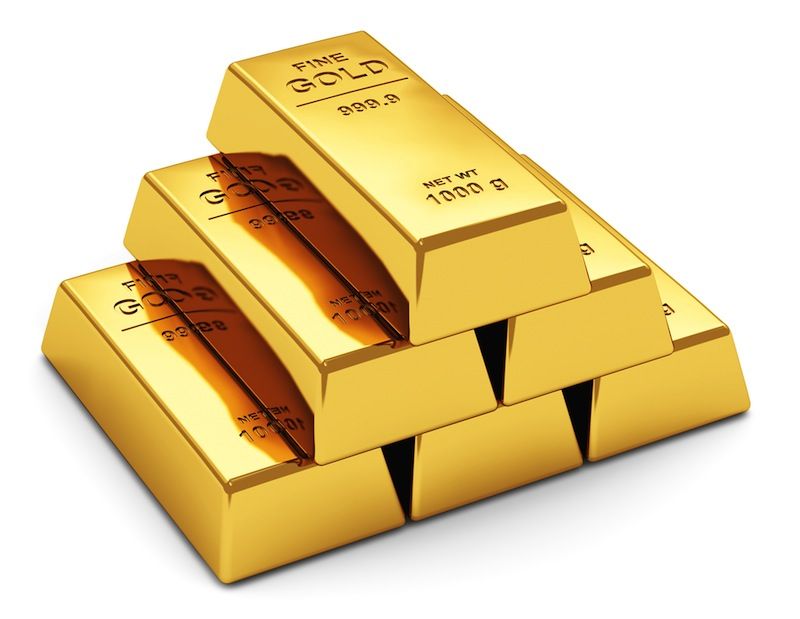Over the last 20 years, the price of gold has experienced significant fluctuations, with a generally upward trend. This precious metal has long been considered a safe haven for investors during times of economic uncertainty. In this blog post, we will explore the factors that have influenced the price of gold since 2003, including global economic events, central bank policies, and investor sentiment. By examining these factors, we can better understand how and why the price of gold has evolved over time.
2003-2008: The Golden Bull Run
The early 2000s were marked by the beginning of a major bull market in gold, which lasted until 2011. In 2003, gold was priced at approximately $350 per ounce, and by 2008, the price had soared to around $850 per ounce.
Several factors contributed to this bull run:
1.1. The 9/11 Attacks and Global Uncertainty
The 9/11 terrorist attacks in 2001 had long-lasting effects on global markets and investor sentiment. As geopolitical tensions increased, many investors sought the safety of gold as a store of value.
1.2. Weak US Dollar
During this period, the US dollar weakened significantly against other major currencies, which increased demand for gold as an alternative investment.
1.3. Low-interest rates
Central banks worldwide maintained low-interest rates, which made gold more attractive as an investment compared to interest-bearing assets like bonds.
1.4. Emerging Markets Demand
The growth of emerging markets like China and India led to increased demand for gold for both investment and jewelry purposes.
2008-2011: The Global Financial Crisis and Gold’s Peak
Gold prices continued their upward trajectory, reaching a record high of over $1,900 per ounce in September 2011. The global financial crisis of 2008 and the subsequent economic downturn were major drivers of this peak in gold prices.
2.1. Safe Haven Appeal
The financial crisis led to widespread panic in global financial markets, prompting investors to flock to gold as a safe haven asset.
2.2. Quantitative Easing
In response to the crisis, central banks around the world implemented unconventional monetary policies, including quantitative easing (QE). QE increased the money supply and stoked fears of inflation, further boosting the demand for gold.
2011-2015: The Bear Market and the End of Quantitative Easing
From 2011 to 2015, gold prices experienced a bear market, with prices falling from over $1,900 per ounce to around $1,050 per ounce in December 2015. Several factors contributed to this decline:
3.1. End of Quantitative Easing
The Federal Reserve began tapering its QE program in 2013, signaling a return to more conventional monetary policy. This development led to reduced fears of inflation and a decreased demand for gold as a hedge.
3.2. Strong US Dollar
The US dollar strengthened during this period, making gold more expensive for investors holding other currencies and reducing its appeal.
3.3. Low Inflation
Despite concerns about inflation due to QE, inflation rates remained low in major economies, further diminishing gold’s attractiveness as an inflation hedge.
2016-2019: Renewed Interest in Gold
From 2016 to 2019, gold prices began to recover, reaching around $1,500 per ounce by the end of 2019. This recovery was driven by a combination of factors:
4.1. Political Uncertainty
Events like the Brexit referendum in 2016 and the US-China trade war increased global political uncertainty, prompting investors to seek the safety of gold as a hedge against risk.
4.2. Global Economic Slowdown
The global economy experienced a slowdown during this period, with many countries facing economic challenges. This situation contributed to increased demand for gold as a safe-haven investment.
4.3. Central Bank Gold Purchases
Central banks around the world increased their gold reserves during this time, signaling their confidence in the metal as a long-term store of value. This trend also supported gold prices.
4.4. Negative Interest Rates
Some central banks implemented negative interest rate policies, making it more expensive to hold cash and bonds. As a result, investors turned to gold as an alternative investment.
2020-2021: The COVID-19 Pandemic and Gold’s New High
The COVID-19 pandemic in 2020 led to unprecedented economic and financial market turmoil. Gold prices surged, reaching a new all-time high of over $2,000 per ounce in August 2020.
5.1. Economic Stimulus and Monetary Easing
Governments and central banks worldwide implemented massive fiscal and monetary stimulus measures to mitigate the economic impact of the pandemic. These policies led to concerns about inflation and currency debasement, further fueling demand for gold.
5.2. Record Low Interest Rates
Interest rates around the world reached record lows, making gold more attractive as an investment compared to interest-bearing assets.
5.3. Flight to Safety
As the pandemic-induced uncertainty persisted, investors sought the safety of gold as a hedge against potential market downturns.
2021-2023: A Period of Consolidation and Fluctuations
Following the peak in 2020, gold prices began to consolidate, fluctuating between $1,700 and $1,900 per ounce. Several factors contributed to this period of consolidation:
6.1. COVID-19 Vaccine Rollout and Economic Recovery
The introduction of COVID-19 vaccines and the gradual reopening of economies led to increased optimism about global economic recovery. As a result, some investors shifted their focus from safe-haven assets like gold to riskier investments.
6.2. Inflation Concerns
Despite the initial fears of inflation, actual inflation rates remained relatively contained in most major economies. This development reduced the urgency to invest in gold as an inflation hedge.
6.3. Central Bank Policies
As central banks began to consider tapering their stimulus measures and raising interest rates, investor sentiment towards gold became more cautious.


Leave a Reply